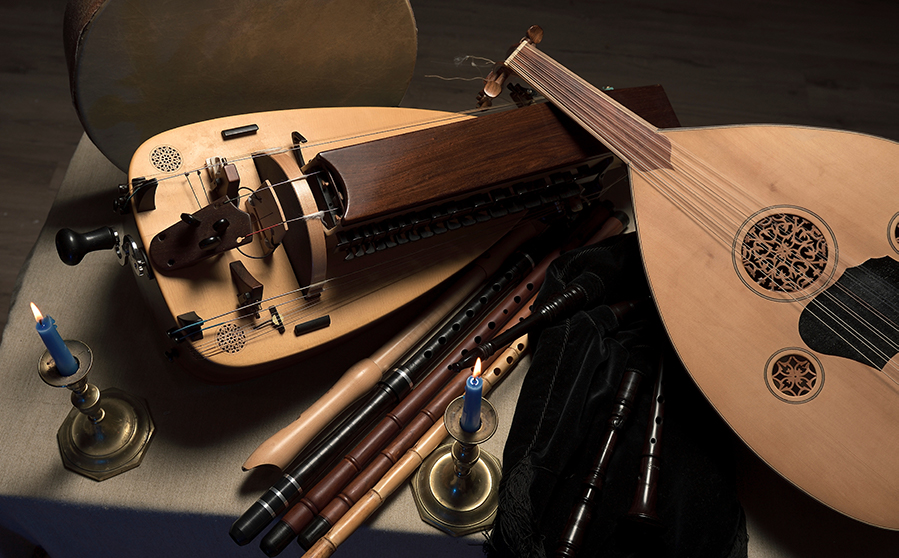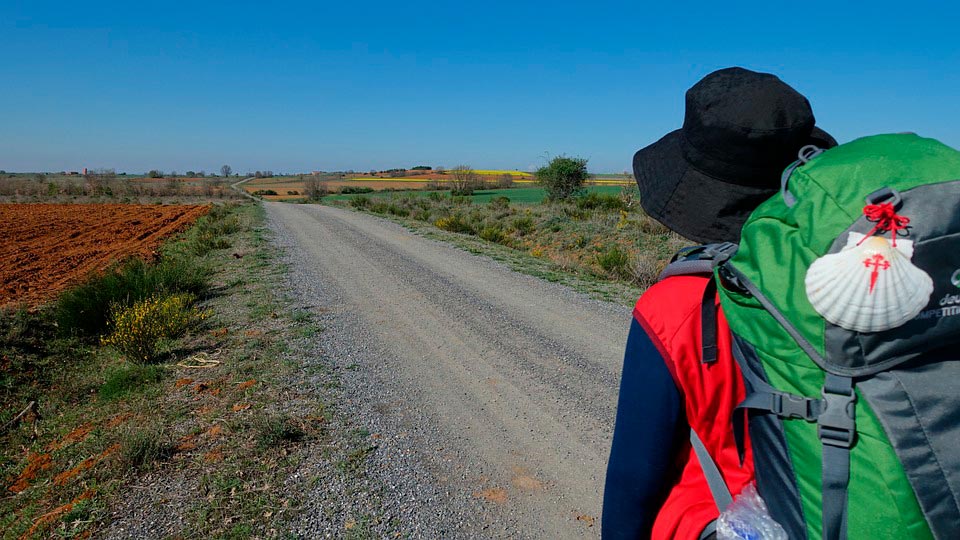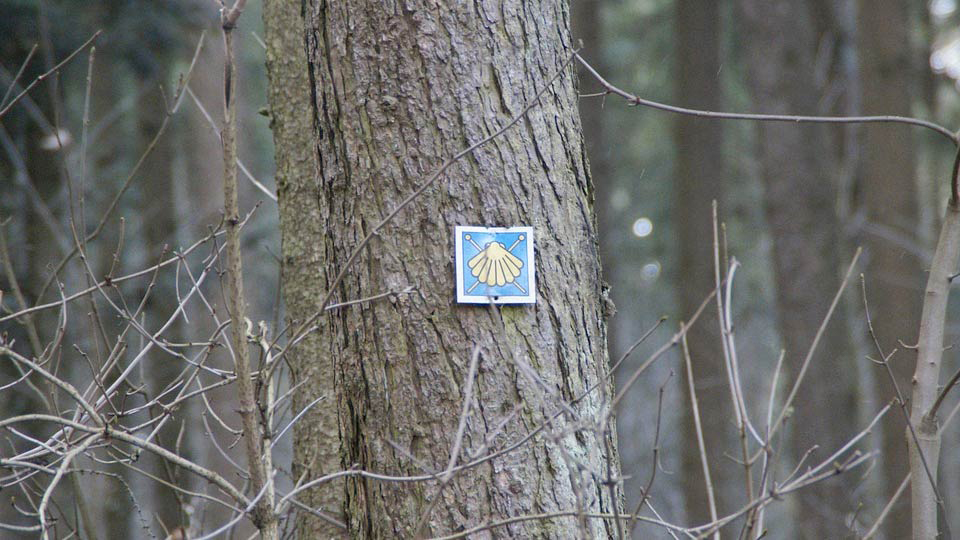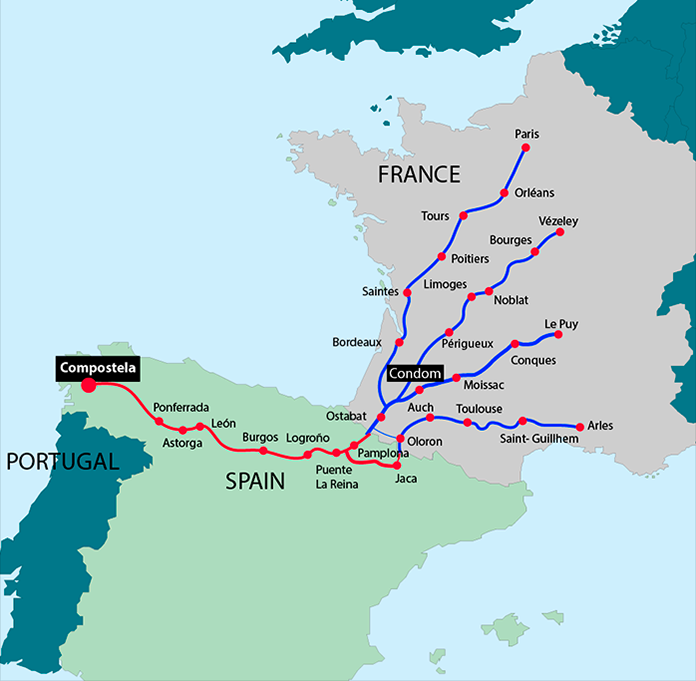Why Belina Lansac was selling medallions of St James in Condom
Recommended Books
- Medieval European Pilgrimage by Diana Webb (2002)
- The Roads to Santiago: The Medieval Pilgrimage Routes Through France and Spain to Santiago de Compostela by Derry Brabbs (2008)
- A Pilgrim’s Guide to the Camino de Santiago: St Jean Pied de Port – Santiago de Compostela by John Brierley (2023)
More information on how to be a pilgrim
Santiago de Compostela Pilgrimage
The Apostle St James was beheaded in Jerusalem in AD 44. In the 9th century his tomb was ‘discovered’ in Galicia, a part of north-west Spain which the Moors had not managed to conquer. But it was not until the 12th century that Compostela pilgrimages became widely known, as alternatives to going to Jerusalem or Rome.
Why did they ‘discover’ St James’s bones in Santiago ?
It is an historical fact that St James was beheaded in AD 44 in Jerusalem. Another historical fact is that the Moors invaded Spain in 711 and quickly conquered most of Iberia. The city of Toledo in the middle of Spain continued to be the centre of Christianity in Iberia and to have an archbishop. There were also many Jews and many Muslims there and it became the centre of learning and translation from Greek and Arabic. The European knowledge of medicine and mathematics came from Toledo.
It is thought that the co-existence in Toledo of the three religions of the ‘Book’ somehow affected Christian belief in the Trinity and that this bothered especially Sismando, the bishop of Iria Flavia in north-western Spain which the Moors had not conquered. He and the King of Asturias Alfonso III felt that they needed to find the bones of an apostle in order to carry on the Christian tradition and it is said that in about the year 800 they claimed that a shepherd in a field of stars (Campo de Estrellas) had found the tomb of St James.

The Pilgrims’ Guide
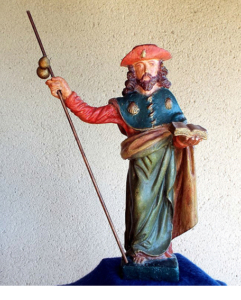
The Pilgrims’ Guide was written in the 12th century, and annexed to the Codex Calixtinus. It was kept in Santiago Cathedral, unknown until 1882 when it was published by Father Fidel Fita following the ‘rediscovery’ of St James’s bones in 1879. This led to the (false) idea that there were four historic routes to Santiago, and maps were produced showing these routes;
Condom is on the pilgrimage route from Le Puy and is about 1000 km from Santiago. It is the preferred route now because it goes through fewer large towns than the other three routes. Each year 20,000 people walk, cycle or ride a horse through Condom on their way to Santiago. Walking is well-known to be therapeutic, good for your health but good for your morale too. It enables you to discard all sorts of worries and preoccupations and concentrate on trudging onwards to a goal of contentment and ease with oneself.
Pilgrimage music
When they reached Santiago pilgrims went into the cathedral to give thanks for their safe journey and to keep watch around the altar of St James. There they would hold burning tapers in their hands and sing, some of them lamenting their sins, others reciting psalms. The 12th century Pilgrims’ Guide contained much of the music which was sung in the cathedral at that time. It also listed the musical instruments which the pilgrims used: citharas, lyres, timpanis, pipes, trumpets, harps, viols, psalteries.
King Alfonso X The Wise (1221-1284) wrote pilgrimage songs (cantigas) which are still sung by pilgrims on their way to Santiago. So are the songs by Ramon Llull (1232-1316) who composed vocal and instrumental music inspired by his own pilgrimages to Jerusalem and to Africa. And the pilgrims from Einsiedeln in A Mystery of Blood and Dust sang hymns inspired by St Bernard of Clairvaux (1091-1153).
Recommended CDs of Camino de Santiago pilgrim music
Medieval musical instruments
